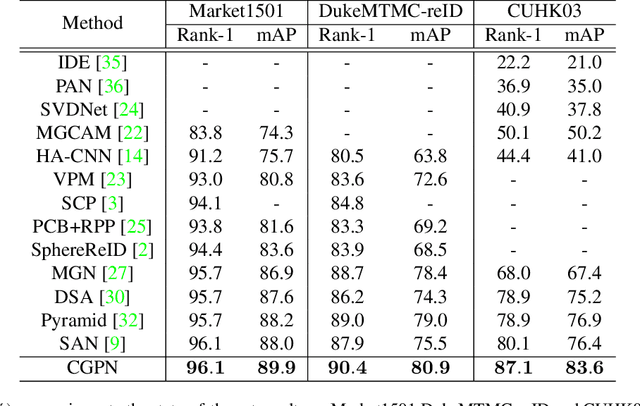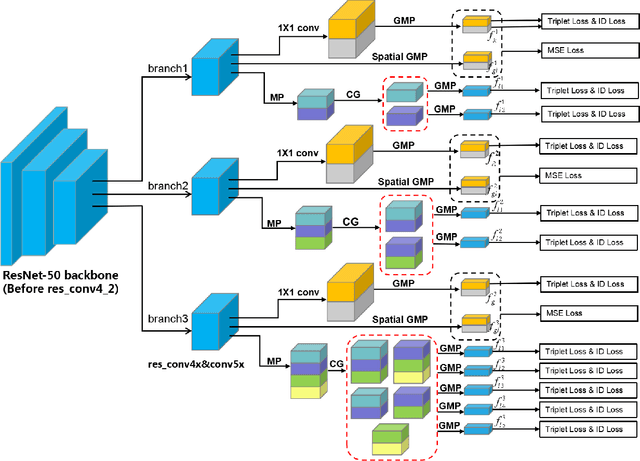Qingfang Zheng
OpenEarthSensing: Large-Scale Fine-Grained Benchmark for Open-World Remote Sensing
Feb 28, 2025Abstract:In open-world remote sensing, deployed models must continuously adapt to a steady influx of new data, which often exhibits various shifts compared to what the model encountered during the training phase. To effectively handle the new data, models are required to detect semantic shifts, adapt to covariate shifts, and continuously update themselves. These challenges give rise to a variety of open-world tasks. However, existing open-world remote sensing studies typically train and test within a single dataset to simulate open-world conditions. Currently, there is a lack of large-scale benchmarks capable of evaluating multiple open-world tasks. In this paper, we introduce OpenEarthSensing, a large-scale fine-grained benchmark for open-world remote sensing. OpenEarthSensing includes 189 scene and objects categories, covering the vast majority of potential semantic shifts that may occur in the real world. Additionally, OpenEarthSensing encompasses five data domains with significant covariate shifts, including two RGB satellite domians, one RGB aerial domian, one MS RGB domian, and one infrared domian. The various domains provide a more comprehensive testbed for evaluating the generalization performance of open-world models. We conduct the baseline evaluation of current mainstream open-world tasks and methods on OpenEarthSensing, demonstrating that it serves as a challenging benchmark for open-world remote sensing.
EMMA: Empowering Multi-modal Mamba with Structural and Hierarchical Alignment
Oct 08, 2024



Abstract:Mamba-based architectures have shown to be a promising new direction for deep learning models owing to their competitive performance and sub-quadratic deployment speed. However, current Mamba multi-modal large language models (MLLM) are insufficient in extracting visual features, leading to imbalanced cross-modal alignment between visual and textural latents, negatively impacting performance on multi-modal tasks. In this work, we propose Empowering Multi-modal Mamba with Structural and Hierarchical Alignment (EMMA), which enables the MLLM to extract fine-grained visual information. Specifically, we propose a pixel-wise alignment module to autoregressively optimize the learning and processing of spatial image-level features along with textual tokens, enabling structural alignment at the image level. In addition, to prevent the degradation of visual information during the cross-model alignment process, we propose a multi-scale feature fusion (MFF) module to combine multi-scale visual features from intermediate layers, enabling hierarchical alignment at the feature level. Extensive experiments are conducted across a variety of multi-modal benchmarks. Our model shows lower latency than other Mamba-based MLLMs and is nearly four times faster than transformer-based MLLMs of similar scale during inference. Due to better cross-modal alignment, our model exhibits lower degrees of hallucination and enhanced sensitivity to visual details, which manifests in superior performance across diverse multi-modal benchmarks. Code will be provided.
Integrating Coarse Granularity Part-level Features with Supervised Global-level Features for Person Re-identification
Oct 15, 2020



Abstract:Holistic person re-identification (Re-ID) and partial person re-identification have achieved great progress respectively in recent years. However, scenarios in reality often include both holistic and partial pedestrian images, which makes single holistic or partial person Re-ID hard to work. In this paper, we propose a robust coarse granularity part-level person Re-ID network (CGPN), which not only extracts robust regional level body features, but also integrates supervised global features for both holistic and partial person images. CGPN gains two-fold benefit toward higher accuracy for person Re-ID. On one hand, CGPN learns to extract effective body part features for both holistic and partial person images. On the other hand, compared with extracting global features directly by backbone network, CGPN learns to extract more accurate global features with a supervision strategy. The single model trained on three Re-ID datasets including Market-1501, DukeMTMC-reID and CUHK03 achieves state-of-the-art performances and outperforms any existing approaches. Especially on CUHK03, which is the most challenging dataset for person Re-ID, in single query mode, we obtain a top result of Rank-1/mAP=87.1\%/83.6\% with this method without re-ranking, outperforming the current best method by +7.0\%/+6.7\%.
 Add to Chrome
Add to Chrome Add to Firefox
Add to Firefox Add to Edge
Add to Edge